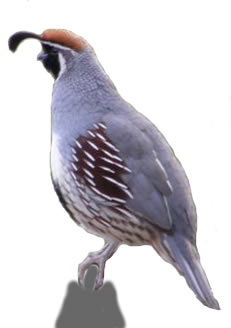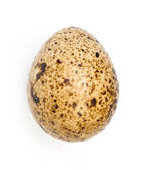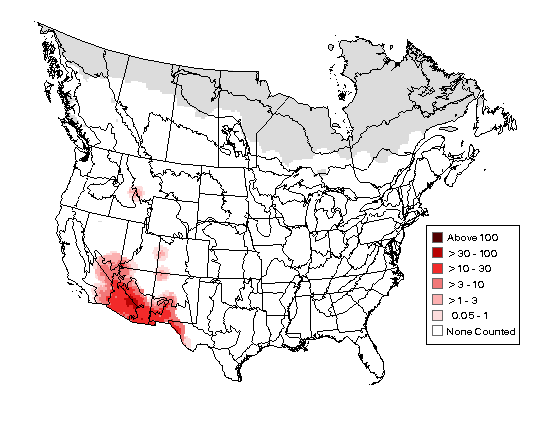Gambles Quail

Gambles Quail Male
The Gambles Quail range is the southwestern United States and parts of Mexico with a habitat of arid desert scrub. It inhabits the desert regions of Arizona, California, Colorado, New Mexico, Nevada, Utah, Texas, New Mexico-border Chihuahua and the Colorado River region of Baja California
Males have a black top-knot plume. Male Gambel's can be distinguished by having no scaling on the lower breast, but having a yellowish belly with a large black spot. The top of the head is rusty brown with a white border and a black face, forehead and chin; the back and upper breast is grayish brown with rusty brown flanks that have white streaks.
Females also have a top-knot, but it is much smaller in size. Her overall
coloration is similar to the male, but she lacks the black and white face,
the black breast spot and the rust color on her is much lighter. The hen
is also slightly smaller than the male.
In the winter Gambel's Quail form large groups or coveys. During the
spring, these large flocks break up and the males begin to draw females
to their choosen territory.

Gambles Quail Egg
Incubation: The temperature for gambles quail is 99.5°F for
forced air incubators and 102°F for still-air incubators. The humidity
for gambles quail should be about 60% (86° wet bulb) for the first
20 days of incubation. On the last three days the humidity should b raised
to about 75% (92° wet bulb). The eggs should be turned at least 3
times per day to prevent the embryonic membranes from sticking to the
shell. If you are turning the eggs by hand you should use a soft lead
pencil to mark an “x” on one side and an “o” on the
other. This will help you make sure all eggs have been turned. Stop turning
the eggs 3 days before the eggs are to hatch, for gambles that is on
day 21.

Gambles Quail Distribution Map
Map Source USGS
